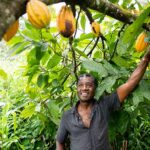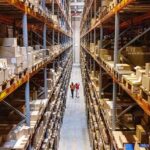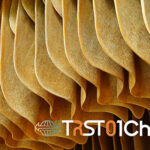Digital Monitoring, Reporting & Verification Solution
Over the past recent years, the credibility of the rapidly growing carbon market has been increasingly scrutinized, with reports questioning the validity of various carbon offsetting projects.
This has led to a surge in demand for transparency and accountability. Current platforms face limitations in accuracy, reliability and scalability, while complex technical methodologies have also hindered the effectiveness of carbon projects thus diminishing stakeholder confidence in the dMRV process.
TRST01 addresses these barriers by capitalising Web3’s on-chain capabilities and Web2 applications and integrating blockchain technology into the dMRV process. This provides a more robust, streamlines, secure, transparent, and technologically advanced solution that enhances the authenticity of carbon credit measurement, reporting and verification.
This platform is designed to make a significant impact on various sectors such as energy, agriculture and forestry enabling them to accurately and transparently track and report their use of carbon credits and emission reduction.
TRST01’s ultimate goal is to democratize the carbon market and make it accessible to all, fostering a more sustainable and accountable approach to carbon offsetting and climate action.
The benefits
Real-time tracking
Real time tracking in carbon offsetting projects using technologies like satellite imagery, drones, and IoT sensors to monitor progress and performance instantly. This enables immediate decision-making and course correction, meets project goals and fosters transparency and accountability. It therefore encourages stakeholder engagement by providing primary evidence of sustainable practices.
Third party monitoring and verification
An independent third party monitoring and verification process ensures bias free accuracy and transparency. The results are recorded on the blockchain, providing permanency and a secure and transparent record of the project's carbon credits and emission reductions.
Data analysis
A comprehensive data analysis helps extract valuable insights on the status of the project and provides a clear picture on the challenges and opportunities that need attention. This results in taking quick actions to mitigate risks and points of failures in advance. It enables the development of a more effective and streamlined process.
Stakeholder engagement
Blockchain integration ensures that all project stakeholders including project developers, monitoring and verification organizations and investors are equal participants and are updated with the status of the projects with transparent data. This helps in better engagement and collaboration among all players involved for the success of the project.
Our dMRV projects
Paddy cultivation is laborious, water-intensive, and methane-emitting because of excess use of water and Fertilizer. It is estimated in India there is a 60% excess use of water than is required. In the state of Telangana, our partner Sow and Reap launched project Varri estimated to cover farm land of 50,000 hectares by end of 2023 and 2,50,000 hectares by the end of 2026. Project Varri aims to revolutionize water conservation and methane reduction through sustainable cultivation methods such as the Alternate Wetting and Drying Process (AWD). AWD cuts water usage by almost 40% and 4-5 tons equivalent of carbon emissions per hectare.


With concrete jungles taking over our cities, it is important to bring back more green spaces for better health and compensate for planet warming emissions from urban complexes. Miyawaki is an urban micro-forest that adopts the technique of a Japanese botanist, Akira Miyawaki, who, in the 1970s, began to plant young native plant species – trees, shrubs, and grasses – ones that would naturally grow in that region without human interference, thus attempting to restore degraded lands and fight climate change. Planting saplings close to one another encourages growth as they compete for light (High-Density Planting). Miyawaki forests are self-sustaining and grow in two to three years. They contribute to the reduction of air and noise pollution, the cooling of concentrated heat islands, attracts local wildlife and creates carbon sinks. Miyawaki projects encourage afforestation. Some researchers found that in India Miyawaki forest can sequester about 50 metric tonnes of carbon dioxide per hectare over the course of ten years. Hyderabad’s Stone Craft Woods is the largest Miyawaki project in India spread over 18 acres with TRST01 as their consulting technology partner. This methodology can be on-Chained on blockchain to measure the reduction of GHG emissions.
Poultry manure generated at farms is generally left to decompose at and around farms in an aerobic environment. This project is an attempt to convert organic waste into biogas for financial and environmental benefits. Project Biogas is a bio-gas to energy initiative in Siddipet, Telangana, that captures biogas from poultry manure via anaerobic digestion and uses it to generate electric energy using biogas systems. The biogas power plant where the proposed project activity is being carried out has two biogas engines installed with a total capacity of 1,500 m3 (17,044 KWe/h). This means that the biogas generator system that will be installed will have a total power capacity of 43,200 kWeh per month. An estimated 525,600 KWh of power is produced each year. The energy generated by the biogas unit is fed into the power grid.




